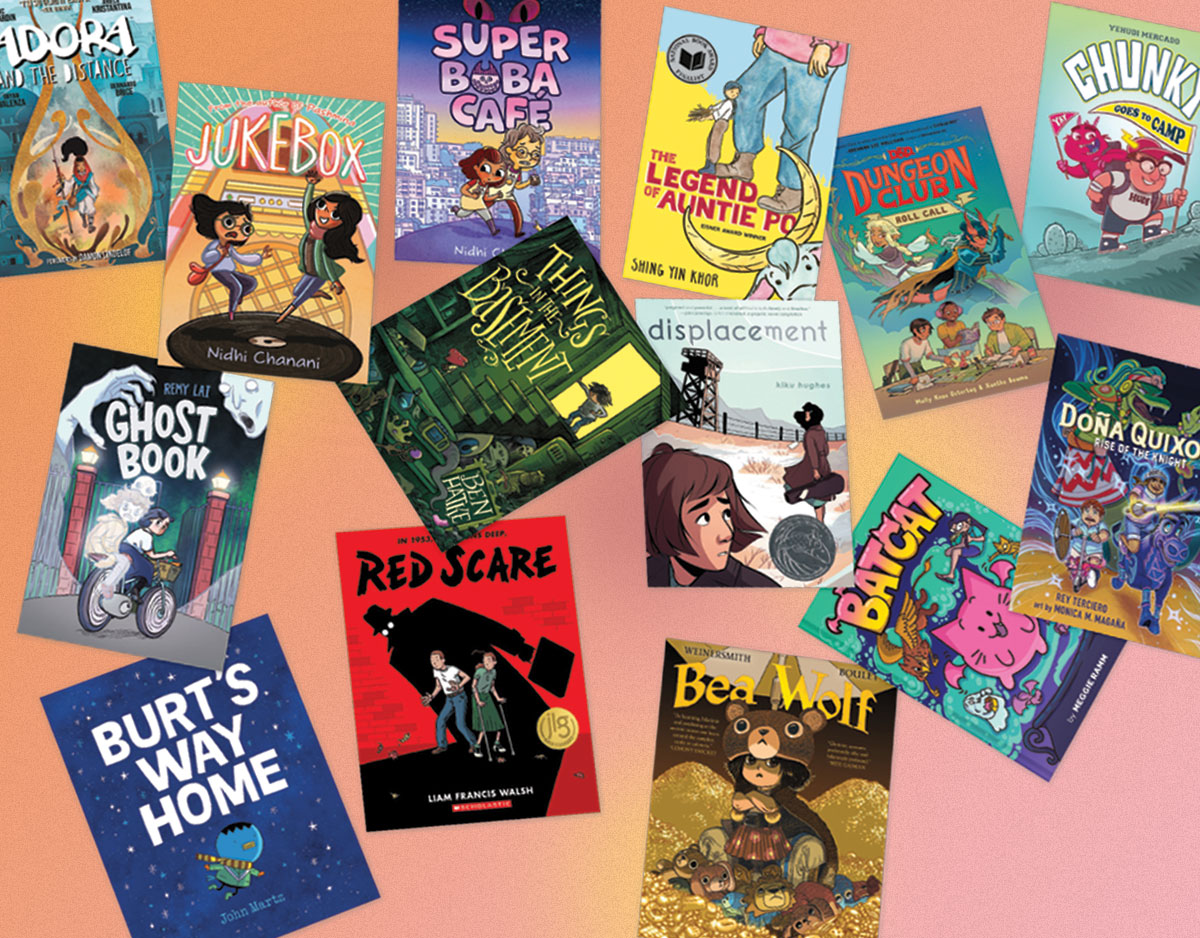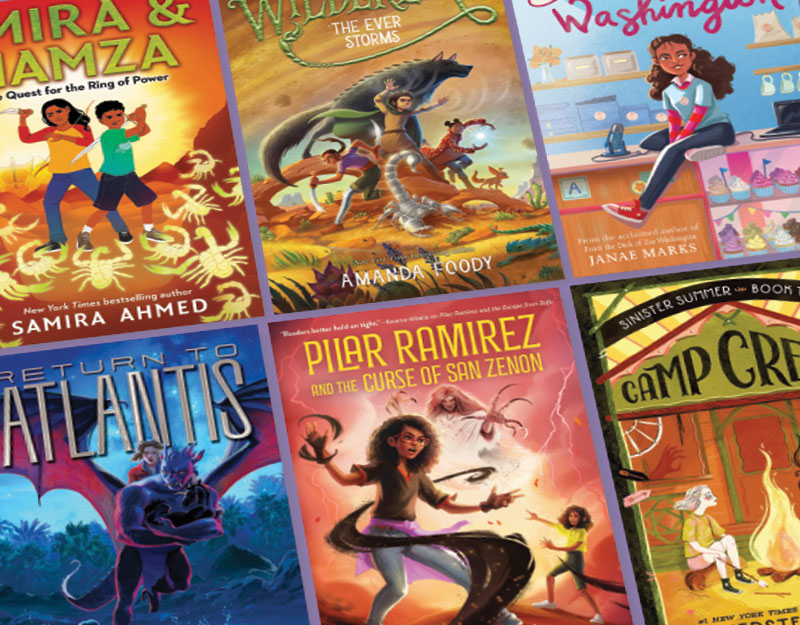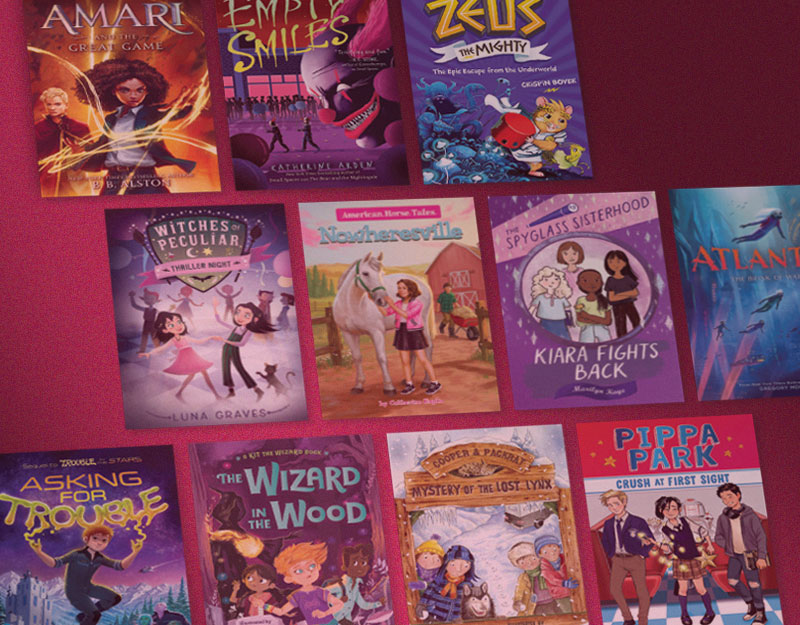Most Surprising Things We Learned While Drawing Amelia Earhart, a guest post by Melanie Gillman and A.C. Esguerra
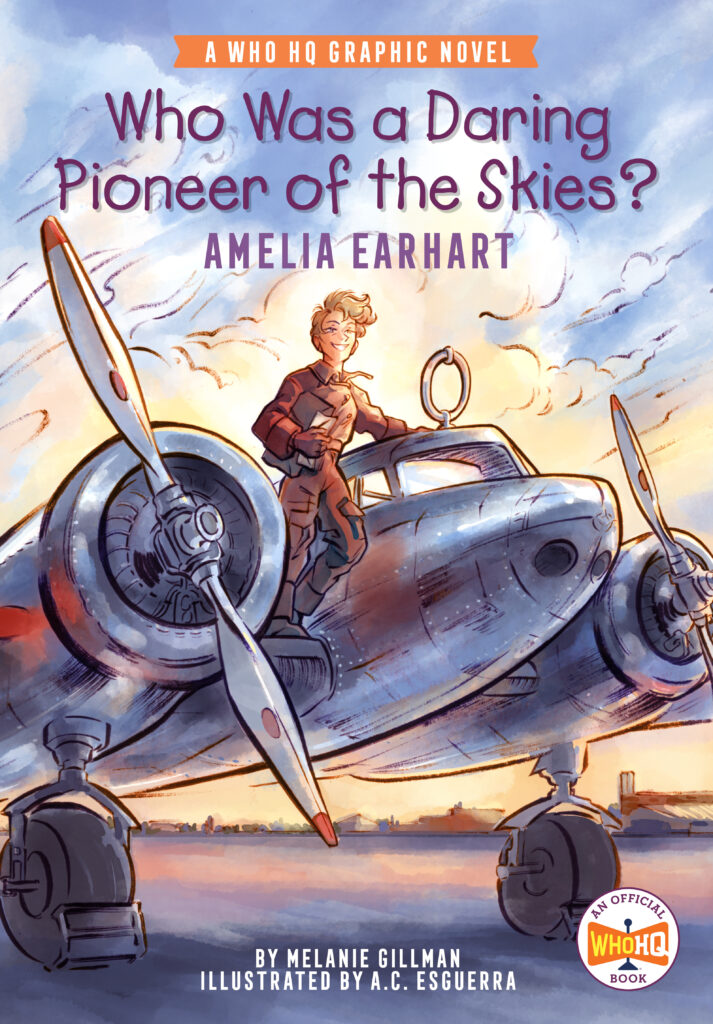
A.C. Esguerra
The very first character designs I submitted for the comic came back from editorial with a major note: change Amelia’s outfit.
As it turned out, the ensemble I had initially chosen to draw Amelia in was from a 1928 publicity photoshoot. Everything, from the clothing right down to the poses, was designed to associate Amelia with a pre-existing, popular image of aviation in the public eye: that of Charles Lindbergh. But our story is set in 1937. By that time, Amelia was a household name. Most often, she flew in either a practical flight suit or in casual clothes: sensible shoes or boots under trousers, simple shirts, and patterned scarf jauntily knotted and thrown over the shoulder for windswept flair. I drew up revised costuming sketches accordingly.
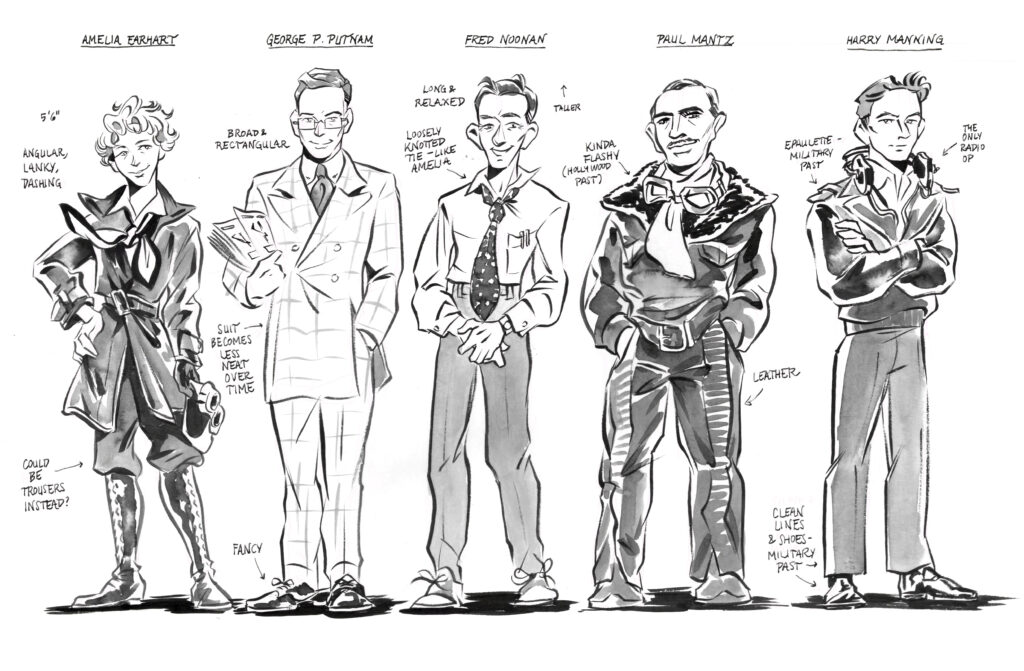
When it comes to the representation of Amelia Earhart, the line between staged and candid is not always clearly marked. No doubt this is due to the durability of the image that she and her husband, G.P. Putnam worked so hard to create. Both of them understood very well the need to secure Amelia’s reputation and brand as a trailblazing female pilot in the 1930s American aviation celebrity economy. Sustaining the attention and goodwill of sponsors and investors would in turn finance more aviation and business endeavors. With this in mind, Amelia was kept constantly scheduled for lecture tours, book contracts and other money-making opportunities. If the airplane was Amelia’s well-oiled machine of choice, publicity was G.P.’s.
ADVERTISEMENT
ADVERTISEMENT
It is difficult to gauge how Amelia herself truly felt about the obligations of fame. Quotes from her regarding the subject come across as diplomatically elusive at times—
“Any woman who wishes to should be able to benefit in any legitimate way that comes to hand, without stigma.”
—and slightly weary at others.
“I make a record [flight] and then I lecture on it. That’s where the money comes from. Until it’s time to make another record.”
In other instances, Amelia was all game and enthusiasm, especially if the work could help her to inspire women to break out of the gender conventions of the day. By all accounts, this was a subject Amelia was truly passionate about. She had been, in fact, very reluctant to get married, perceiving that the demands of domesticity would restrict her freedom to live according to her own desire, including flying.
Perhaps the most surprising thing I learned while drawing Amelia Earhart is something that, in retrospect, seems obvious: clothes make not the pilot, and she was more than what she appeared to be. Melanie’s script does a wonderful job of evoking this complexity, and I did my best to convey it visually. One source that was very helpful to me in constructing an image of Amelia Earhart was not a photo, but her own book, Last Flight. Aviation history has no shortage of pilots who authored accounts of their adventures, and like her contemporaries Beryl Markham and Antoine de-Saint Exupery (to name just a few), Amelia, too, describes the wonders and perils of crossing changeable skies and borders—albeit in her own cheerful, confident and sometimes facetious voice. The jocular and dashing quality of Amelia’s own words guided my depiction of her character most of all.
On the ground and between stops on the equator-circling flight, Amelia dutifully lists the names and positions of the various military or government personnel who host her. These details may speak to straightforward gratitude, to power and media savvy, or a bit of both. In any case, Amelia almost always turns hastily and gladly to descriptions of preparations for the next flight, the next airfield, the next journey. You get the sense she can’t wait to get back in the air.
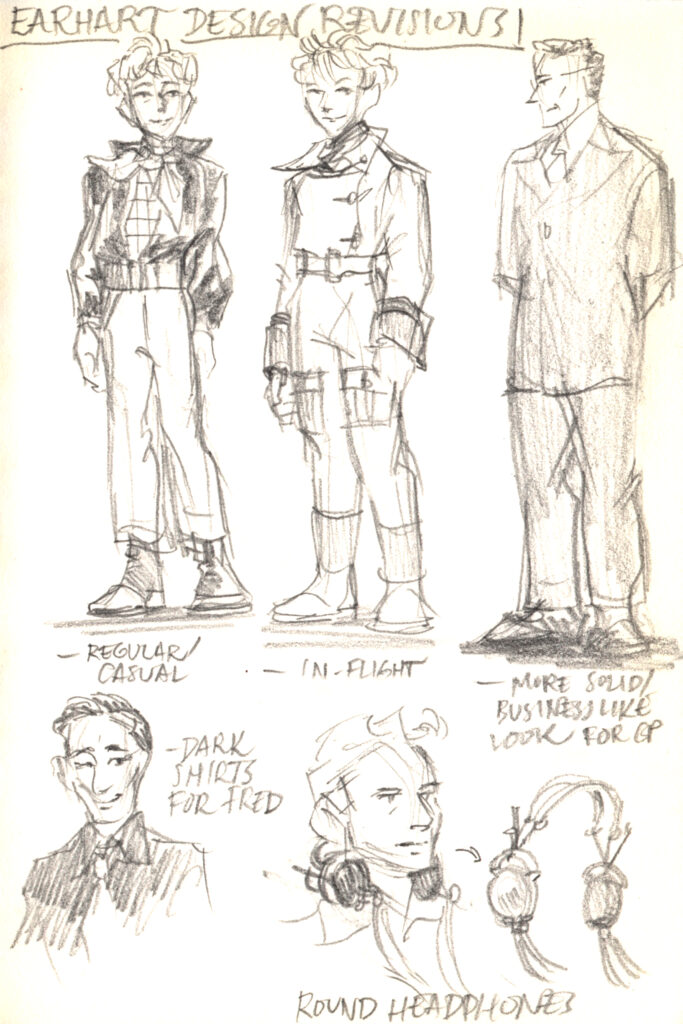
Melanie Gillman
While reading about Amelia Earhart, I was surprised by a common feeling that several authors expressed: the more they learned about her, the less they liked her.
In the modern public’s imagination, Earhart is remembered as a aviation pioneer, a champion of women’s rights, and the central figure of a nearly-century-old mystery. None of these are necessarily false claims about her life or legacy – but they are perhaps overdue for critical reexamination, so that we can appreciate a more nuanced and complicated version of her story.
Amelia Earhart is, in many ways, an early example of a successfully manufactured American feminist hero. Much of the publicity she received during her life can be traced back to George P. Putnam – a savvy publicist and wealthy scion of the family who owned the prominent publishing firm, G.P. Putnam’s Sons. In 1927, G.P. Putnam had been able to turn Charles Lindbergh’s memoir We into a major blockbuster. The following year, he began interviewing women pilots, hoping to recreate the success of We by arranging the first trans-Atlantic flight to include a woman passenger, then publishing the woman’s memoir on the subject. Through this, G.P. Putnam met Amelia Earhart – who was, at the time, an unknown social worker with limited experience flying. It was important to Putnam that the woman he chose for this publicity stunt had the right “look” – and Amelia Earhart had a notable resemblance to Charles Lindbergh.
G.P. Putnam was indeed able to turn Earhart’s trans-Atlantic flight and subsequent memoir into a national success. Putnam became Earhart’s manager and publicist – arranging not just aviation stunts for her, but also national speaking tours, publications, and countless promotional partnerships with products ranging from women’s fashion to chewing gum to cigarettes. He also married her in 1931, in a complicated merger of their personal and professional lives.
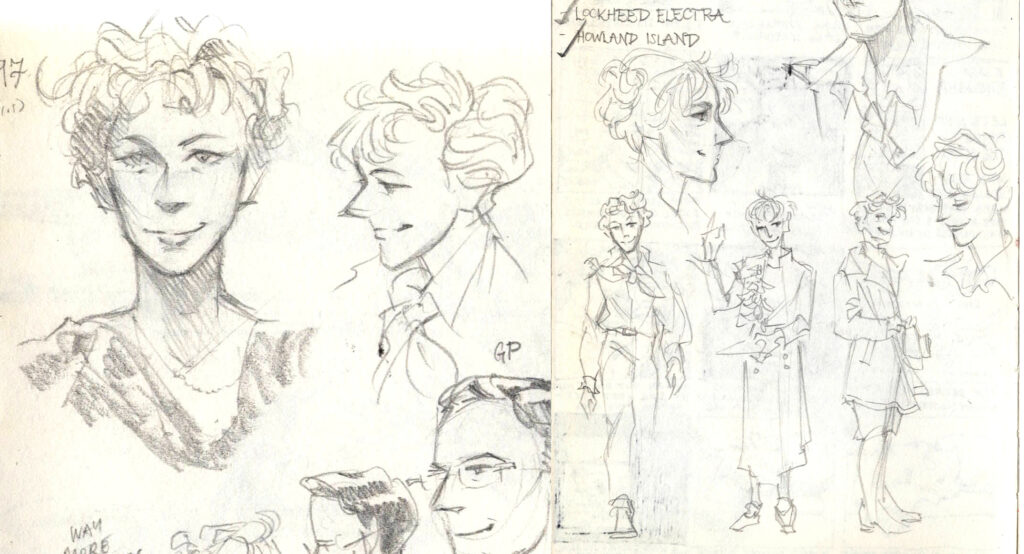
As an aviation celebrity, Earhart had a national platform to speak about women’s rights – which she did, forcefully and memorably. Her carefully-crafted public image, managed at every step by G.P. Putnam, presented her as living proof that women were equally capable as men in the air. The American public at the time was hungry for exactly this sort of celebrity – turning Earhart’s career into a very lucrative enterprise for the married couple, at least so long as she kept setting aviation records.
One additional strange aspect of this celebrity enterprise is that, by many accounts written by her contemporaries, Earhart was not the most skilled pilot. Many other, more-skilled and more-experienced women pilots were working at the same time as Earhart – setting impressive records of their own and championing women’s involvement in aviation in their own ways. But, unfortunately, none of them had the backing of a publicity machine as robust as what Putnam built for Earhart. Amazingly, we are still seeing the effects of Putnam’s enterprise play out to this day, almost a century after her death. Today, Amelia Earhart is still very much so a household name – but those other women pilots have been largely forgotten.
It is probably unlikely that we will see Earhart’s public legacy diminish in our lifetimes. A more achievable goal, though, might be to reevaluate her life story, in hopes of introducing more nuance. There is still much to be said about what it means to purposefully manufacture a historical feminist hero for financial gain, and what effect that manufacturing process can have on other women’s achievements from the same time period. That is, in my mind, a fascinating aspect of this history – and I hope down the road we can see it explored in more of the books that get written about her every year.
Meet the authors

ADVERTISEMENT
ADVERTISEMENT
Melanie Gillman is a cartoonist who specializes in LGBTQ books for kids and teens. They are the creator of the webcomic and graphic novel As the Crow Flies, published in 2017 by Iron Circus Comics, and winner of the 2018 Stonewall Honor Award. They are also the author of Stage Dreams, published by Lerner/Graphic Universe in 2019. In addition to their graphic novel work, they are also a senior lecturer in the Comics MFA Program at the California College of the Arts.

A.C. Esguerra is an award-winning comics artist and author. Their debut graphic novel Eighty Days, a historical romance epic about queer pilots in an alternate 1930s, will be published by Archaia in 2021. They have illustrated for BOOM! Studios (Adventure Time) and Northwest Press (Theater of Terror!) and are a regular writing contributor for Baum-kuchen Studio. A.C. lives in Los Angeles with their partner and a very good shiba inu.
About Who Was a Daring Pioneer of the Skies?: Amelia Earhart: A Who HQ Graphic Novel
Discover the story behind aviation pioneer Amelia Earhart’s mysterious and fatal second trip around the world in this captivating graphic novel — written by Stonewall Award Honoree Melanie Gillman and illustrated by Eighty Days creator A.C. Esguerra.
Presenting Who HQ Graphic Novels: an exciting new addition to the #1 New York Times Best-Selling Who Was? series!
Explore the story of Amelia Earhart, as she embarks on her second and final journey around the globe. A story of determination, heart, and courage, this graphic novel invites readers to immerse themselves into the daring grit of the aviation pioneer — brought to life by gripping narrative and vivid full-color illustrations that fly off the page.
ISBN-13: 9780593224663
Publisher: Penguin Young Readers Group
Publication date: 08/16/2022
Series: Who HQ Graphic Novels
Age Range: 8 – 12 Years
Filed under: Guest Post
About Amanda MacGregor
Amanda MacGregor works in an elementary library, loves dogs, and can be found on Twitter @CiteSomething.
ADVERTISEMENT
ADVERTISEMENT
SLJ Blog Network
Name That LEGO Book Cover! (#53)
Cover Reveal and Q&A: The One and Only Googoosh with Azadeh Westergaard
Exclusive: Vol. 2 of The Weirn Books Is Coming in October | News
Fighting Public School Book Bans with the Civil Rights Act
ADVERTISEMENT



